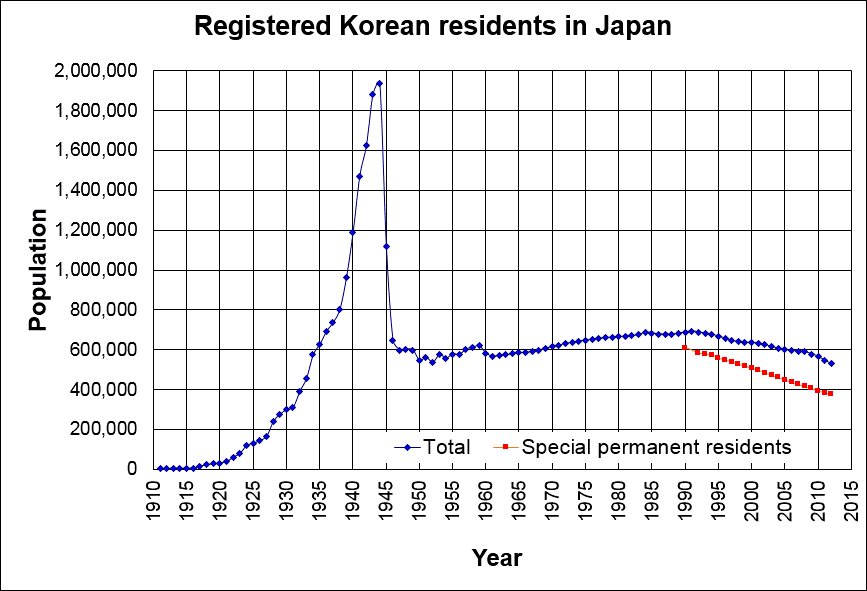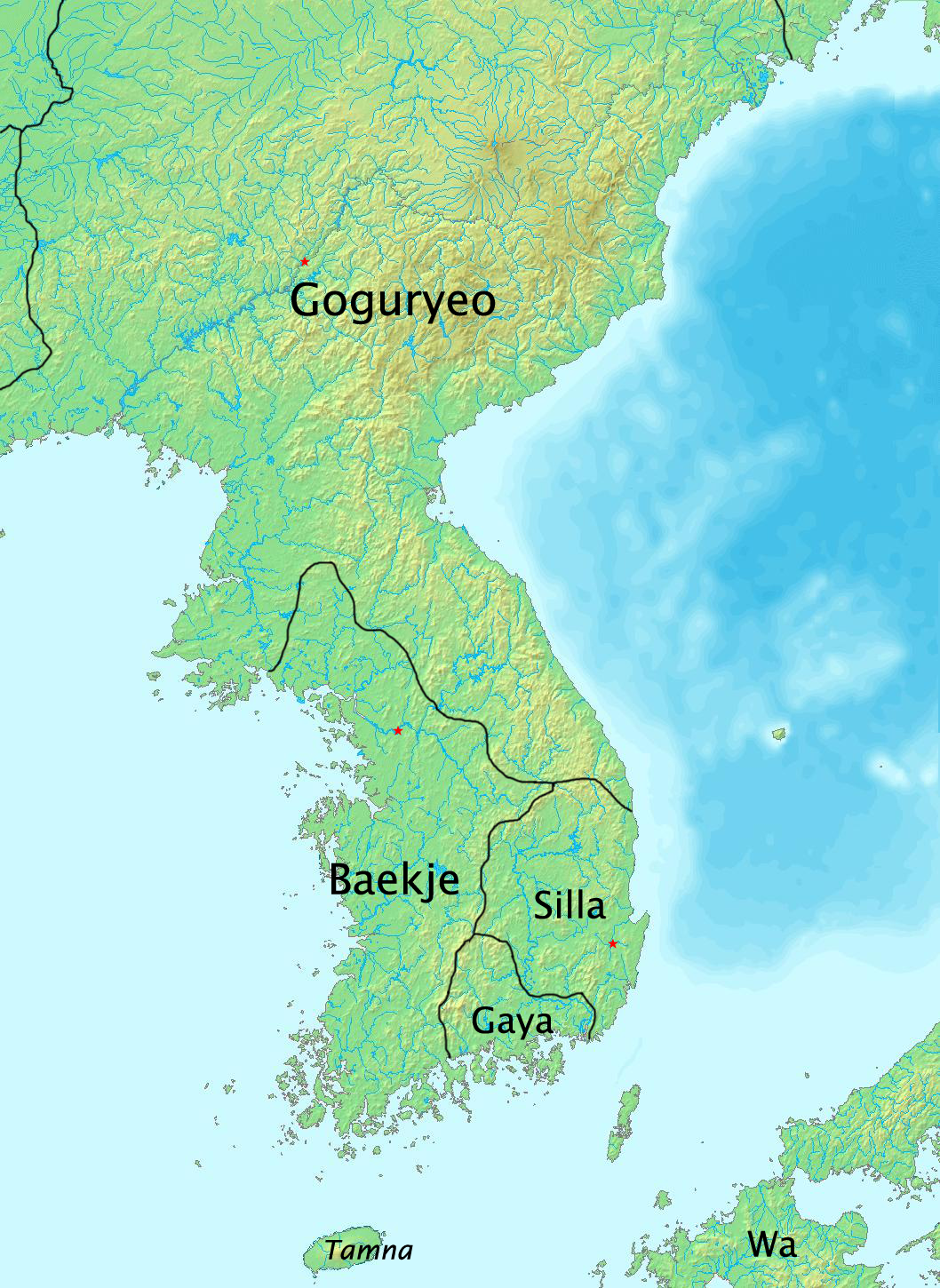|
Shigakishi
, was the third son of King Muryeong of Baekje. Some scholars believe he may be the same person as Prince Junda. In October, 504, king Muryeong of Baekje sent a diplomat named Managun with tribute to Emperor Buretsu of Japan. Buretsu was angry that Baekje had not sent an envoy in a long time and detained the envoy. So, in April, 505 Muryeong sent a new envoy with Maagun with tribute but this time sending a message to Buretsu: “''Previously to submit tribute I dispatched Managun, who was of no relation to the royalty of Baekje. Therefore, I humbly send Saa, that he may serve in the court''.” He eventually had a son, the monk named Kun. He was the ancestor of the Yamato no Kimi.Nihon Shoki, Scroll 16 See also * Muryeong of Baekje * Tomb of King Muryeong * Yamato clan * Takano no Niigasa * Koreans in Japan * Baekje Baekje or Paekche (, ) was a Korean kingdom located in southwestern Korea from 18 BC to 660 AD. It was one of the Three Kingdoms of Korea, together with Goguryeo ... [...More Info...] [...Related Items...] OR: [Wikipedia] [Google] [Baidu] |
Muryeong Of Baekje
Muryeong of Baekje (462–523, r. 501–23) was the 25th king of Baekje, one of the Three Kingdoms of Korea. During his reign, Baekje remained allied with Silla against Goguryeo, and expanded its relationships with China and Japan. Background The Tomb of King Muryeong calls him King Sama (斯摩), and records his birth year as 462. The ''Samguk Sagi'' calls him King Muryeong, with the personal name (휘) of Sama (斯摩). He is described as the second son of the 24th king Dongseong. He became king when Dongseong was assassinated by the court official Baekga. The following year, he crushed a planned rebellion by Baekga. Other records China's '' Liang shu'' gives his surname as Yeo and personal name as Yung, and states that he restored Baekje into a strong nation. Japan's '' Nihonshoki'' gives his birth year as 461, and describes him as the son of the 21st king Gaero. It is recorded Buyeo Gonji, the brother of King Gaero went to Japan to serve Emperor Yūryaku with King Mury ... [...More Info...] [...Related Items...] OR: [Wikipedia] [Google] [Baidu] |
Prince Junda
was the second son of King Muryeong of Baekje who settled in Japan. His father was born on the island of Kyushu in Japan and because of this was called Semakishi (嶋君) and King Shima (斯麻王). Prince Junda was most likely also born in Japan during the early 480s and went back to Baekje in 501 when his father returned to become the 25th King of Baekje. In 504 his father sent an envoy for a tribute to Japan named Managun but he was imprisoned by Emperor Buretsu who was angry that Baekje had not sent tribute for many years. Buretsu is known to have suffered from insanity and this is why his successor Emperor Keitai was carefully chosen from a distant branch of the Imperial Family. In the '' Nihon Shoki'': "''Seventh year, spring, second month. The Emperor made a man climb a tree, then with a bow shot him down and laughed.''" The next year in 505 King Muryeong of Baekje sent his son, Prince Junda, as a hostage to Japan to repair relations with the Imperial Court. In the ''Ni ... [...More Info...] [...Related Items...] OR: [Wikipedia] [Google] [Baidu] |
Emperor Buretsu
(489 — 7 January 507) was the 25th legendary Emperor of Japan,Imperial Household Agency (''Kunaichō'') 武烈天皇 (25)/ref> according to the traditional order of succession. No firm dates can be assigned to this Emperor's life or reign, but he is conventionally considered to have reigned from 12 January 499 to 7 January 507. Legendary narrative Buretsu is considered to have ruled the country during the late-fifth century and early-sixth century, but there is a paucity of information about him. There is insufficient material available for further verification and study. Buretsu was a son of Emperor Ninken and his mother is . His name was . He had no children. Buretsu's reign Buretsu's contemporary title would not have been ''tennō'', as most historians believe this title was not introduced until the reigns of Emperor Tenmu and Empress Jitō. Rather, it was presumably , meaning "the great king who rules all under heaven". Alternatively, Buretsu might have been referred to a ... [...More Info...] [...Related Items...] OR: [Wikipedia] [Google] [Baidu] |
Tomb Of King Muryeong
The Tomb of King Muryeong, also known as Songsan-ri Tomb No. 7 (), is the ancient tumulus of King Muryeong, who ruled the Baekje from 501 to 523, and his queen. The rarity of intact Baekje tombs makes this one of the major archaeological discoveries in Korea and a crucial source for the understanding of Baekje, one of the Three Kingdoms of Korea.Kim 1973, 1986; Kim and Pearson 1977. The tomb is located in what is now Gongju, South Chungcheong Province, South Korea. It is Korean Historic Site No. 13. King Muryeong's Tomb is also registered on the South Korean government's tentative list of World Heritage Sites. Excavation The tomb was accidentally discovered during water drainage work on the No.5 and 6 tombs in 1971. It had been untouched by grave robbers and thieves for over a millennium, and when it was excavated it was the first time the tomb had been opened since the bodies of the king and queen were interred there fifteen hundred years earlier. The exterior of the tomb loo ... [...More Info...] [...Related Items...] OR: [Wikipedia] [Google] [Baidu] |
Yamato Clan
The , also known as , was an immigrant clan active in Japan since the Kofun period (250–538), according to the history of Japan laid out in the '' Nihon Shoki''. The name ''fuhito'' comes from their occupation as scribes. They were descended from Prince Junda (''Junda Taishi'') who died in 513 in Japan. He was a son of the 25th king of Baekje, Mureyong. His brother Seong became the 26th king of Baekje and his nephew Prince Imseong also settled in Japan. With the 2002 FIFA World Cup coming, an event hosted by Japan and South Korea, Emperor Akihito told reporters "''I, on my part, feel a certain kinship with Korea, given the fact that it is recorded in the Chronicles of Japan that the mother of Emperor Kammu iigasawas of the line of King Muryong of Baekje.''" According to the ''Shoku Nihongi'', Niigasa was a descendant of Prince Junda, son of Muryeong.''Nihon Shoki'' Chapter 17 It was the first time that a reigning Japanese emperor himself mentioned Korean blood in the imperia ... [...More Info...] [...Related Items...] OR: [Wikipedia] [Google] [Baidu] |
Takano No Niigasa
was a concubine of Emperor Kōnin of Japan and the mother of Emperor Kanmu. Her full name was Takano no Asomi Niigasa. Life Niigasa was a daughter of Yamato no Ototsugu (和乙継). She became a concubine of Prince Shirakabe (白壁王), grandson of Emperor Tenji, and bore Prince Yamabe (''山部王'') in 737 and Prince Sawara (''早良王'') in 750. Prince Shirakabe was married to Princess Inoe (''井上内親王''), a daughter of Emperor Shōmu (聖武天皇) in 744. When Empress Kōken died in 770, Shirakabe was appointed her successor and acceded to the throne as Emperor Kōnin. Princess Inoe and her son, Prince Osabe, were nominated as the Empress and the crown prince respectively, because of her noble birth. The sons of Niigasa had not been considered to be successors until 772, when the Empress (Inoe) was suddenly stripped of her rank following accusations that she had cursed the Emperor. The crown prince, her son, was also disinherited. They were dead two years later. S ... [...More Info...] [...Related Items...] OR: [Wikipedia] [Google] [Baidu] |
Koreans In Japan
comprise ethnic Koreans who have permanent residency status in Japan or who have become Japanese citizens, and whose immigration to Japan originated before 1945, or who are descendants of those immigrants. They are a group distinct from South Korean nationals who have emigrated to Japan after the end of World War II and the division of Korea. They currently constitute the second largest ethnic minority group in Japan after Chinese immigrants, due to many Koreans assimilating into the general Japanese population. The majority of Koreans in Japan are , often known simply as , who are ethnic Korean permanent residents of Japan. The term Zainichi Korean refers only to long-term Korean residents of Japan who trace their roots to Korea under Japanese rule, distinguishing them from the later wave of Korean migrants who came mostly in the 1980s, and from pre-modern immigrants dating back to antiquity who may themselves be the ancestors of the Japanese people. The Japanese word "Zainic ... [...More Info...] [...Related Items...] OR: [Wikipedia] [Google] [Baidu] |
Baekje
Baekje or Paekche (, ) was a Korean kingdom located in southwestern Korea from 18 BC to 660 AD. It was one of the Three Kingdoms of Korea, together with Goguryeo and Silla. Baekje was founded by Onjo, the third son of Goguryeo's founder Jumong and So Seo-no, at Wiryeseong (present-day southern Seoul). Baekje, like Goguryeo, claimed to succeed Buyeo, a state established in present-day Manchuria around the time of Gojoseon's fall. Baekje alternately battled and allied with Goguryeo and Silla as the three kingdoms expanded control over the peninsula. At its peak in the 4th century, Baekje controlled most of the western Korean peninsula, as far north as Pyongyang, and may have even held territories in China, such as in Liaoxi, though this view is controversial. It became a significant regional sea power, with political and trade relations with China and Japan. Baekje was a great maritime power; its nautical skill, which made it the Phoenicia of East Asia, was instrumental i ... [...More Info...] [...Related Items...] OR: [Wikipedia] [Google] [Baidu] |
Monarchs Of Korea
This is a list of monarchs of Korea, arranged by dynasty. Names are romanized according to the South Korean Revised Romanization of Korean. McCune–Reischauer romanizations may be found at the articles about the individual monarchs. Gojoseon Gojoseon (2333 BC – 108 BC) was the first Korean kingdom. According to legend, it was founded by Dangun in 2333 BC. Bronze Age archaeological evidence of Gojoseon culture is found in northern Korea and Liaoning. By the 9th to 4th century BC, various historical and archaeological evidence shows Gojoseon was a flourishing state and a self-declared kingdom. Both Dangun and Gija are believed to be mythological figures, but recent findings suggest and theorize that since Gojoseon was a kingdom with artifacts dating back to the 4th millennium BC, Dangun and Gija may have been royal or imperial titles used for the monarchs of Gojoseon, hence the use of Dangun for 1900 years. * :"An extreme manifestation of nationalism and the family cult was th ... [...More Info...] [...Related Items...] OR: [Wikipedia] [Google] [Baidu] |
Baekje People
Baekje or Paekche (, ) was a Korean kingdom located in southwestern Korea from 18 BC to 660 AD. It was one of the Three Kingdoms of Korea, together with Goguryeo and Silla. Baekje was founded by Onjo, the third son of Goguryeo's founder Jumong and So Seo-no, at Wiryeseong (present-day southern Seoul). Baekje, like Goguryeo, claimed to succeed Buyeo, a state established in present-day Manchuria around the time of Gojoseon's fall. Baekje alternately battled and allied with Goguryeo and Silla as the three kingdoms expanded control over the peninsula. At its peak in the 4th century, Baekje controlled most of the western Korean peninsula, as far north as Pyongyang, and may have even held territories in China, such as in Liaoxi, though this view is controversial. It became a significant regional sea power, with political and trade relations with China and Japan. Baekje was a great maritime power; its nautical skill, which made it the Phoenicia of East Asia, was instrumental in the ... [...More Info...] [...Related Items...] OR: [Wikipedia] [Google] [Baidu] |




